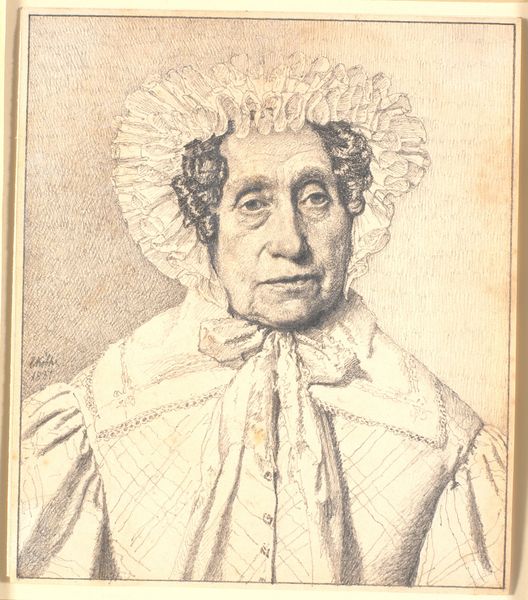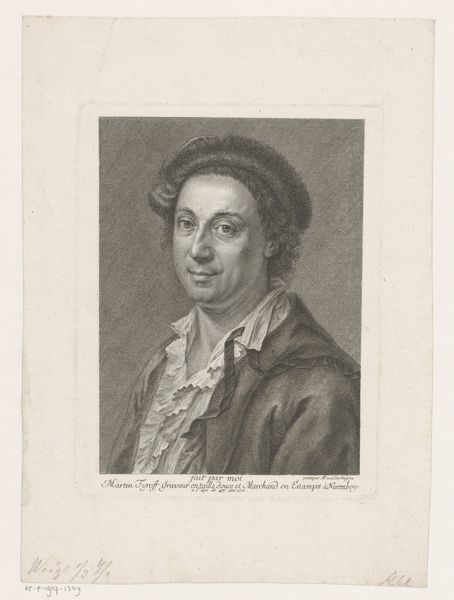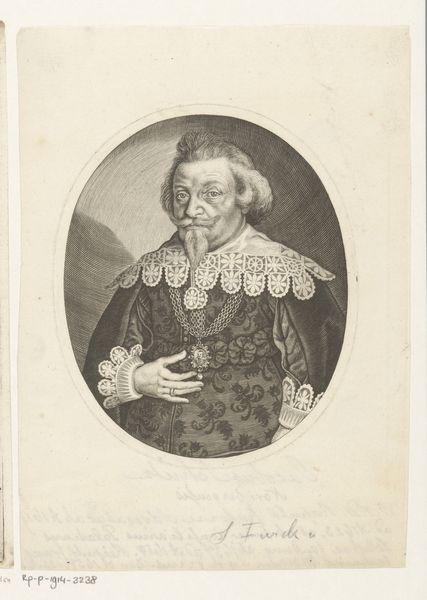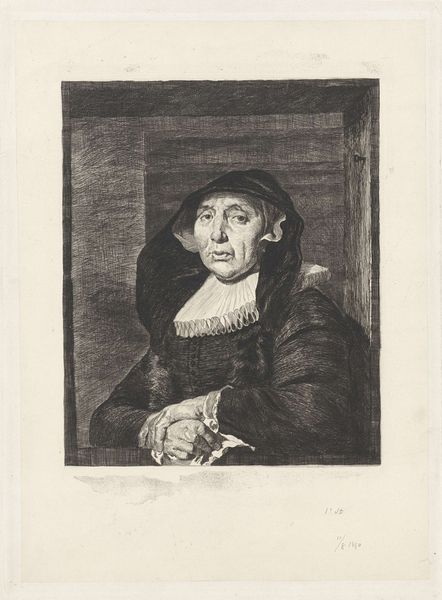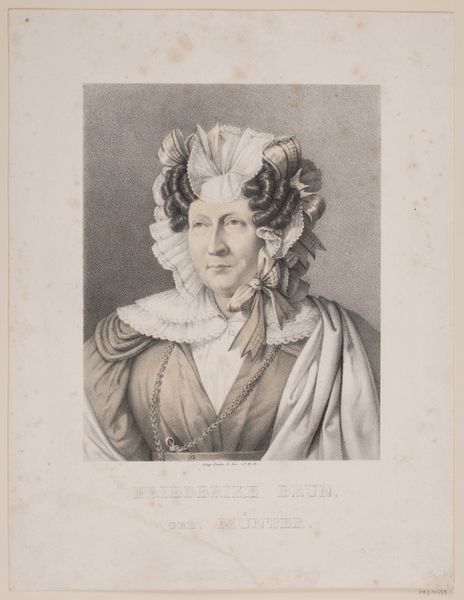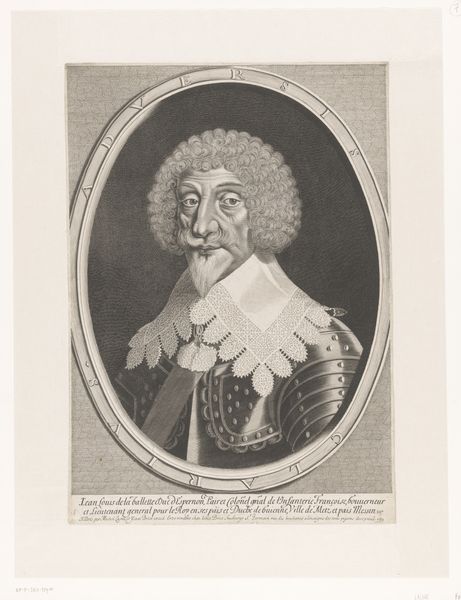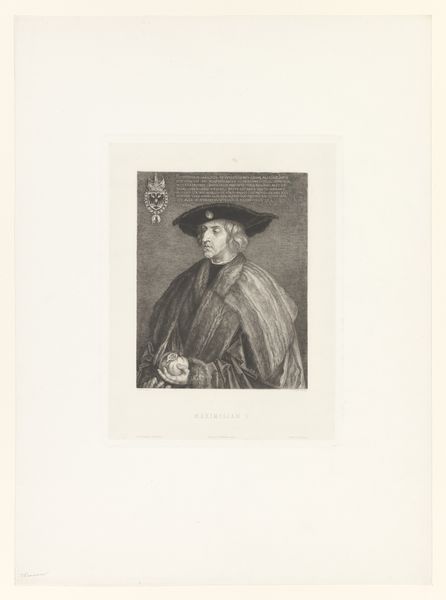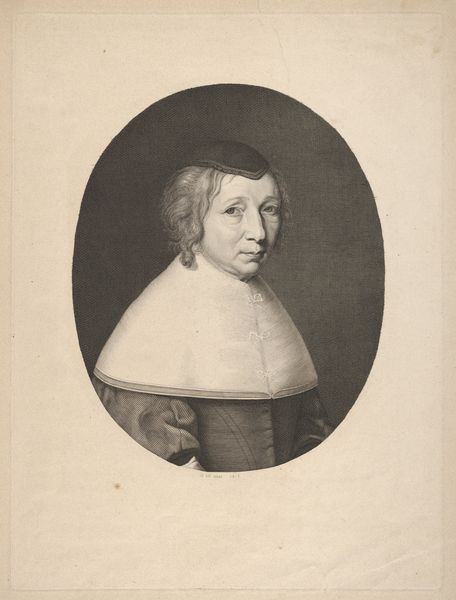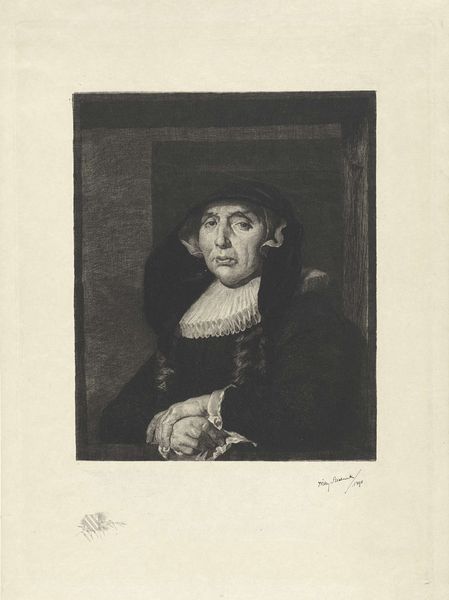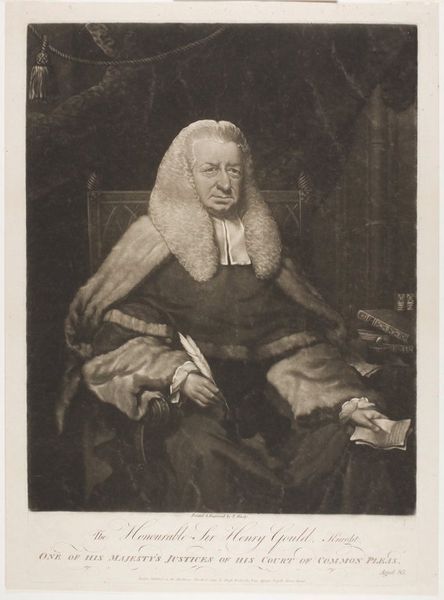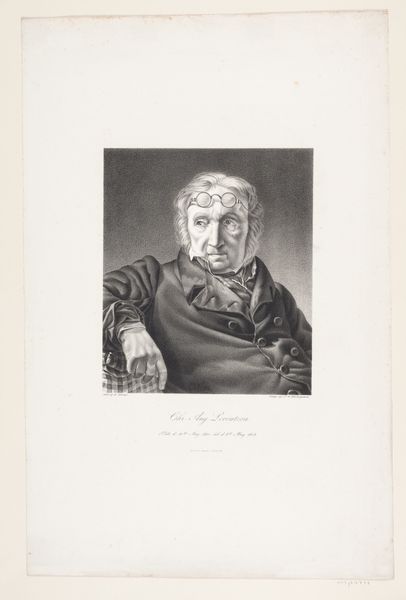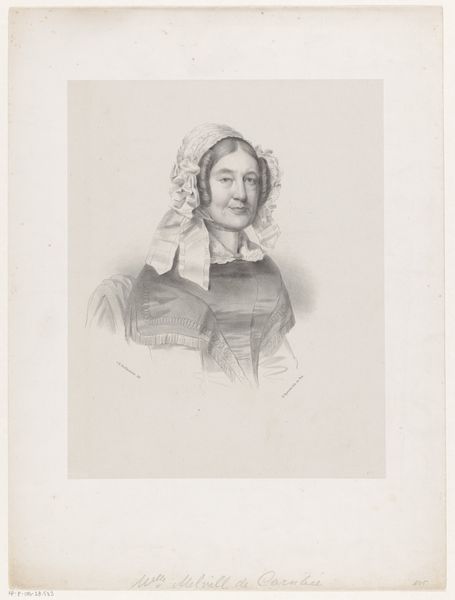
print, etching
#
portrait
# print
#
etching
#
old engraving style
#
portrait reference
#
pencil drawing
#
academic-art
#
realism
Dimensions: 190 mm (height) x 162 mm (width) (plademaal)
Editor: This is an etching from 1863 titled "Maren Krohn," created by Pietro Kobke Krohn. The woman depicted seems so stern, yet there’s a softness in the rendering of her features. How do you interpret this work, especially within its historical context? Curator: I see this portrait as a potent statement about the visibility, or rather, the deliberate rendering visible, of women in 19th-century Denmark. We must ask, what narratives are being told, and whose stories are often marginalized? The meticulous etching technique, typical of academic art, contrasts with the subject. How does the artist negotiate the societal role and identity of this woman within those constraints? Is this perhaps a commentary on the limited avenues of expression available to women of the time, even within the supposedly progressive sphere of artistic representation? Editor: So, you see a possible critique of societal norms in the portrait itself? Curator: Exactly. The choice to depict Maren Krohn with such realism – avoiding idealization – and the rigid composition… It prompts us to question whose gaze this portrait caters to, and what power dynamics are at play. Could it be seen as an act of defiance, making visible the unvarnished realities of women's lives that were often conveniently ignored or prettified by the male-dominated art world? How does this specific portrait resonate with wider, intersectional feminist readings of the era? Editor: That’s fascinating. I never considered it as such an active statement. Curator: Art is rarely neutral. The silences, the omissions, and the deliberate choices made by artists, tell a compelling story, that invites ongoing critical dialogue about identity and representation. What do you take away from that? Editor: I’ll definitely be looking at portraits differently now, considering the power dynamics inherent in the gaze and the historical context of the sitter! Curator: And that is how we actively engage with art!
Comments
No comments
Be the first to comment and join the conversation on the ultimate creative platform.
